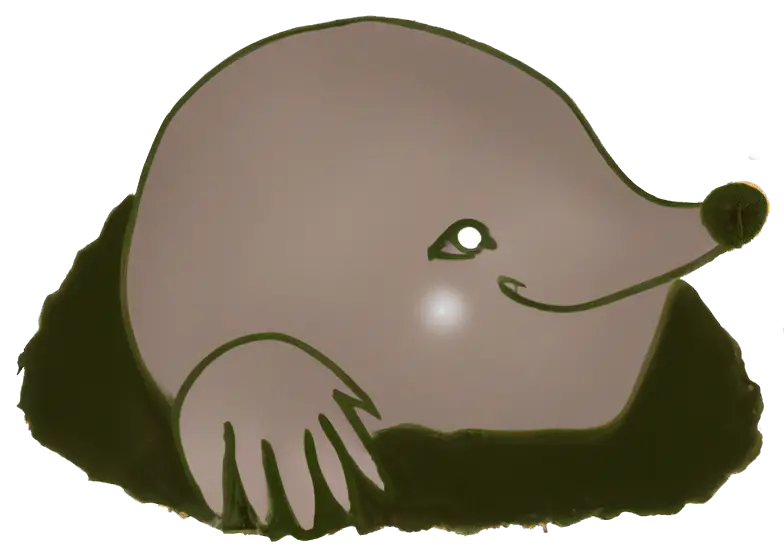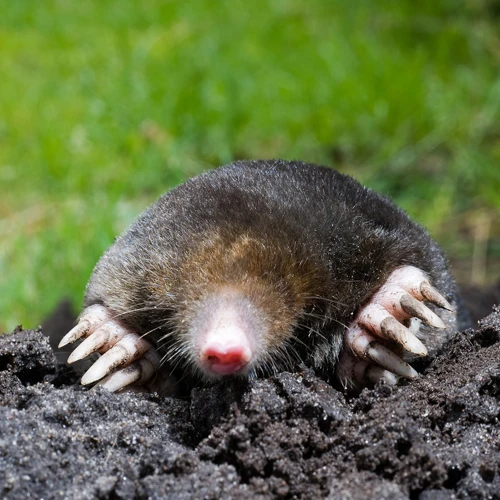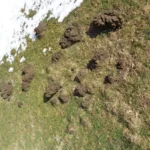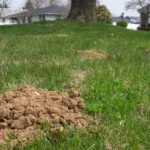Gardeners everywhere know the frustration of dealing with mole infestations. These pesky critters can damage plants, create unsightly mounds, and uproot roots – all of which can seriously impact the health and beauty of your garden. While there are a number of ways to deal with moles, mole poison is one of the most popular options. But how exactly does it work? And what are the safety considerations you should take into account before using it? In this article, we’ll explore the different types of mole poison, how they work, and what you should be aware of before using them.
Types of Mole Poison
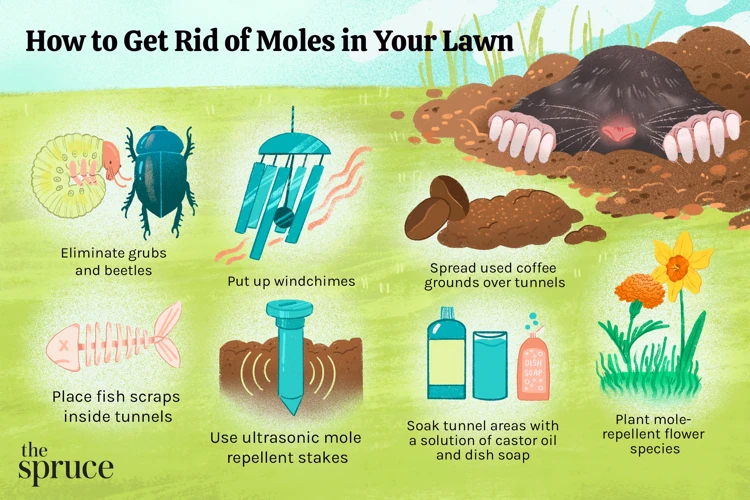
If you’re dealing with a mole infestation, some of the options available to eradicate the pests include trapping, repellents, and poisons. Despite the controversy surrounding the use of poisons for mole control, it remains one of the most effective methods. This article aims to provide a complete guide on types of mole poison available in the market, their active ingredients, and how they work to eliminate mole activity. It will also explore the dangers of using mole poison and highlight some of the factors you should consider before using it.
Zinc Phosphide
One type of mole poison that is commonly used is Zinc Phosphide. Zinc Phosphide is a fast-acting poison that works as a direct irritant to the digestive system of moles. When ingested, the zinc phosphide releases phosphine gas as it reacts with the moisture and acids in the stomach of the mole. The gas then builds up in the digestive tract, causing the mole to die within a few hours.
Zinc Phosphide is available in different forms, including pellets, baits, and tracking powders. This makes it convenient to use and apply in mole-infested areas.
However, it is important to note that while Zinc Phosphide is an effective and widely used poison, it is also highly toxic. It can be harmful to other wildlife and pets, especially if ingested. This poison should be handled with care and kept out of reach of children and pets.
Here is a table summarizing the pros and cons of Zinc Phosphide as a mole poison:
| Pros | Cons |
|---|---|
| Fast-acting | Highly toxic |
| Available in convenient forms | Can harm other wildlife and pets |
Zinc Phosphide can be an effective solution for mole control, but it is important to exercise caution and follow proper handling and disposal procedures to minimize the risk of environmental damage and harm to other creatures. If you are unsure whether Zinc Phosphide is the right mole poison for your situation, consider consulting with a pest control professional or exploring alternative options.
Bromethalin
Bromethalin is a relatively new and modern type of mole poison that is quite popular among lawn care enthusiasts. It is known for its effectiveness in eradicating moles, but it is also known for its potent and deadly nature, making it a very dangerous poison to use. Bromethalin is a neurotoxin that attacks the nervous system of moles, causing brain swelling, seizures, and ultimately death.
Advantages of using Bromethalin:
- Bromethalin is an excellent alternative for homeowners who do not want to use zinc phosphide or Talpirid as their mole poison.
- It requires only a small amount of poison to kill moles, making it cost-effective in the long run.
- It works quickly, and moles usually die within 24-36 hours after ingesting the poison.
Disadvantages of using Bromethalin:
- It is a very strong poison, and if not used correctly, it can harm other animals and pets that might ingest it.
- Bromethalin is not an environmentally friendly poison, and its use may result in long term harmful effects on soil and groundwater.
It is essential to read the manufacturer’s instructions and wear protective clothing while handling bromethalin. It would be best to use it sparingly to avoid unnecessary risks, and to avoid placing the poison in places where other animals and pets might consume it accidentally.
In case your pet ingests bromethalin, contact your veterinarian immediately. Poisoning symptoms of pets include distress, seizures, dizziness, tremors, and vomiting. Bromethalin can have severe and long-term impacts on the health of your pets, hence it is best to take immediate action.
If not disposed of correctly, bromethalin can leach from the landfill into groundwater, strains the eco-systems and harms the soil. Its dumping may result in negative impacts such as the pollution of the community water supplies or streams. If you are introducing any poison into your lawn, you must be aware of the environmental impact of using a lethal product like bromethalin.
Link: types-of-mole-poison
Talpirid
Talpirid is another type of mole poison that is highly effective and easy to use. The active ingredient in Talpirid is Bromoethalin, which is a neurotoxin that affects the central nervous system of the mole. It can be considered as a more humane and eco-friendly option as compared to zinc phosphide.
Talpirid comes in the form of worm-shaped baits which can be easily inserted into the active mole tunnels. The worm shape baits mimic the natural food source of the moles, making them more appealing and attractive. Talpirid mole bait is highly effective at killing moles in just a few days after consumption.
One of the major advantages of using Talpirid is its safety for non-targeted animals and pets. Since Talpirid comes in the form of worm-shaped baits, it can be securely placed inside the mole tunnels, eliminating the risk of unintended animal or pet exposure. However, it’s still important to keep it away from children and pets to avoid any accidental ingestion.
Another advantage of Talpirid is its ease of use. The worm-shaped bait is easy to handle and place inside the mole tunnels. It doesn’t have any unpleasant smell or taste, which makes it appealing to the moles. Talpirid also doesn’t require any specific safety precautions, unlike zinc phosphide or other dangerous mole poisons.
However, despite its advantages, there are still some factors to consider before using Talpirid. It’s essential to identify the active mole tunnels correctly to ensure that the bait is being placed in the right location. Additionally, environmental safety concerns must also be taken into account. While Talpirid is relatively eco-friendly, it’s still a chemical that could harm other animals or plants if not used correctly.
Talpirid is an effective and easy to use mole poison that is relatively safe for non-targeted animals and pets. However, it’s essential to use it with caution, following the proper guidelines and safety measures. Alternatives to mole poison, such as mole control alternatives may also be considered to avoid the negative effects of mole poison on the environment.
How Does Mole Poison Work?
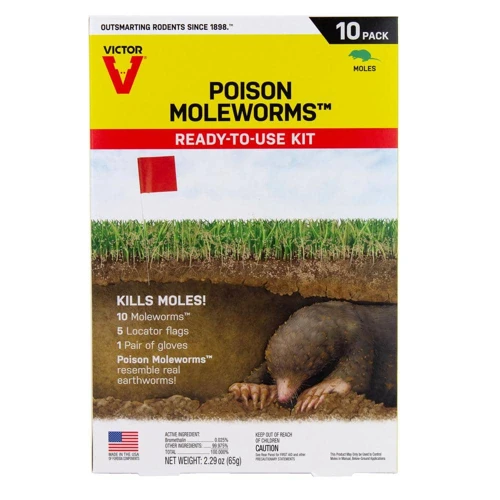
Mole poison works by disrupting the mole’s body functions, causing it to die. The three major types of mole poison work differently to achieve this outcome.
Zinc Phosphide: This type of mole poison is highly toxic and reacts with the moisture in the mole’s stomach to create phosphine gas, which is fatal. Once the mole eats the poisoned bait, it will start showing symptoms within some hours.
Bromethalin: Unlike zinc phosphide, bromethalin doesn’t require the mole to ingest large amounts of poison to be effective. This poison works by causing the mole’s brain to swell, leading to paralysis and eventual death. The symptoms of bromethalin poisoning can take a few days to become apparent.
Talpirid: This type of mole poison uses bromethalin as the active ingredient, but it also includes a bait that mimics the mole’s natural food sources. The mole will consume the bait, and the bromethalin will take effect in the same way as described above.
Mole poison is designed to be very attractive to moles and is typically placed in active tunnels leading to feeding areas, like in gardens or lawns. Once the mole has consumed the poison, it will start showing symptoms specific to the type of poison ingested.
It is important to note that mole poison is not selective and can harm other animals that may ingest it, like pets or wildlife. To avoid these negative effects, it essential to use caution and follow the instructions provided on the poison’s label.
If you choose to use mole poison, it is crucial to monitor the area closely for several days to see if any new mole activity occurs. In case of accidental ingestion, seek immediate medical attention for pets or individuals.
Considering the negative impact of mole poison on the environment and non-target species, it is wise to have a conversation with a pest control specialist before using mole poison. They can suggest alternatives, like humane traps or repellents, that may be more environmentally friendly and effective.
Read also: Environmental impact of mole poison
Factors to Consider Before Using Mole Poison
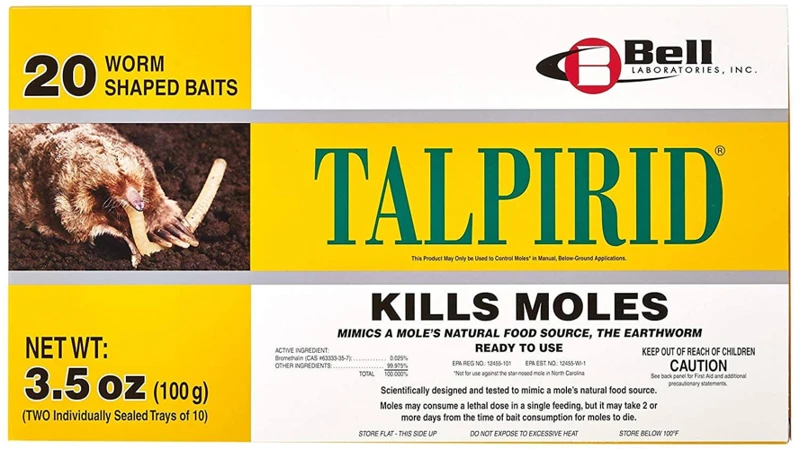
Before using mole poison, it is important to consider certain factors to ensure safe and effective use. These considerations not only involve identifying the extent of the mole infestation, but also take into account environmental safety concerns and legal considerations of using hazardous chemicals. Pet owners and parents should take into consideration the risk of their pets or children ingesting the poison. It is important to take into account all these factors before using any type of mole poison. Otherwise, it can pose a hazard to both humans and animals in the vicinity.
Identifying the Mole Infestation
One should identify the mole infestation before using mole poison. It is important to differentiate between mole damage and other lawn issues caused by insects, rodents, or disease. One of the most common signs of a mole infestation is raised ridges or mounds of soil, which are created by moles as they burrow through the soil. These mounds are typically volcano-shaped and are much larger than gopher mounds. Other signs of a mole infestation include visible surface tunnels, soft or spongy spots in the lawn, and dying vegetation.
To be sure that moles are causing the damage, one can perform a simple test. Flatten some of the raised soil mounds and wait to see if they are raised again after a day or two. If they are raised again, it is likely that moles are present.
It is important to act quickly once a mole infestation is identified, as moles can quickly cause extensive damage to a lawn. However, before using any mole poison, one should consider the potential risks and benefits.
Environmental safety concerns should be considered, as mole poison can harm other wildlife or pollute water sources if not used carefully. Additionally, it is important to keep in mind any legal considerations regarding mole poison use in your area.
To avoid harming non-target animals, one should choose a mole poison that is specifically designed to kill moles, such as Zinc Phosphide or Talpirid. Proper application techniques should also be followed – only apply mole poison directly into active tunnels and avoid spreading it on the surface.
By carefully identifying the mole infestation and considering all potential risks and benefits, one can make an informed decision about whether or not to use mole poison in their lawn. Additionally, one may want to consider alternative methods of controlling moles, such as live traps or physically removing them from the lawn. It is important to prioritize the safety of both one’s family and their pets, which is why the use of mole poison should be approached with caution.
Environmental Safety Concerns
When it comes to using mole poison in your garden or lawn, it’s important to be aware of the environmental safety concerns that may arise. Here are a few things to keep in mind:
- Impact on Non-Target Animals: Mole poison can pose a risk to other animals such as birds, squirrels, and domestic pets. If ingested, the poison can harm or even kill these animals. It’s crucial to use mole poison responsibly and place it in areas that are inaccessible to non-target animals.
- Soil Contamination: Some mole poisons contain chemicals that can linger in the soil long after the poison has been used. This can be harmful to beneficial insects and microorganisms in the soil. It’s important to read the label carefully and avoid using products that contain harmful chemicals.
- Runoff: If too much mole poison is used, it can leach into local water sources and harm aquatic habitats. This can lead to the death of fish and other aquatic life. To prevent runoff, it’s important to only use the recommended amount of mole poison and avoid using it near bodies of water.
- Secondary Poisoning: Mole poison can also cause secondary poisoning if an animal eats a mole that has ingested poison. This can pose a risk to predators such as hawks and foxes. It’s important to monitor the use of mole poison and remove any dead moles from the area.
It’s important to remember that using mole poison is only one method of controlling mole infestations. Before resorting to poison, consider other alternatives such as trapping or using natural repellents. If you do decide to use mole poison, follow the instructions carefully and take all necessary precautions to ensure safety for yourself, other animals, and the environment. Be sure to read more about the dangers of mole poison on your lawn and what to do if your pet ingests it to have a comprehensive understanding of the environmental safety concerns associated with using it.
Legal Considerations
Legal considerations are crucial while using mole poison. It is essential to check the local laws and regulations regarding the use of poisons for pest control. Using mole poison without proper authorization can result in serious legal consequences.
One major concern is that some poisons, including zinc phosphide and bromethalin, can be harmful to non-target species. These non-target species can include pets, livestock, and wildlife, and unintentional poisoning can result in legal action against the person responsible.
Another issue to consider is the labeling and usage instructions for the mole poison. It is imperative to read and follow the instructions carefully to ensure safe and effective use. Failure to follow the instructions can lead to environmental contamination, harm to other species, and unwanted side effects.
It is important to note that a license may be required to use some types of mole poison. It is recommended to consult with a professional pest control expert or the local authorities for guidance on the appropriate steps to take before using mole poison.
Before using any mole poison, it is essential to determine the legal requirements for its use, obtain the appropriate authorization and licenses, and take necessary precautions to ensure safety and minimize potential harm.
| Legal Considerations Summary |
| 1. Check local laws and regulations. |
| 2. Follow usage instructions and labeling. |
| 3. Ensure safety for non-target species. |
| 4. Obtain the necessary license and authorization. |
How to Use Mole Poison?
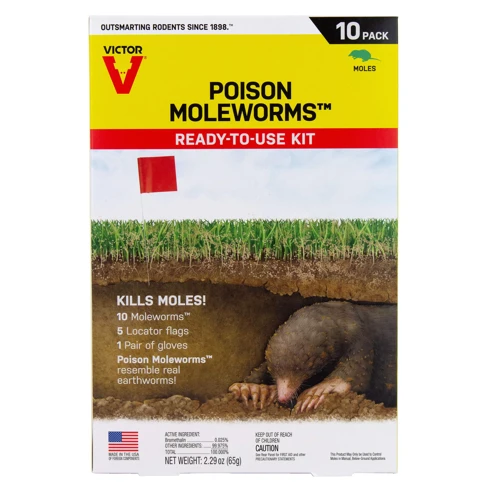
Now that you have chosen the type of mole poison that you will be using, it’s important to understand how to properly use it. The effectiveness of mole poison depends on proper application, which involves identifying active tunnels, taking proper precautions, and following safety measures. Using mole poison without proper knowledge can lead to wasted time and money with little to no effectiveness. It’s crucial to follow the steps carefully to ensure successful elimination of moles. So, let’s take a closer look at the steps involved in using mole poison.
Identify the Active Tunnels
Identifying the Active Tunnels
Before you apply mole poison, it is crucial to identify the active tunnels. Here are some steps to help you do that:
- Inspect your Lawn: Walk around your lawn and keep an eye out for small, volcano-shaped mounds of dirt. These mounds usually have a hole in the center, which is an indication of an active mole tunnel.
- Step on the Mound: Once you have identified the mole mound, step gently on it to flatten it. If the mound pops back up within a day or two, then it is an active tunnel.
- Probe the Soil: Another way to identify the active tunnels is by probing the soil around the mole mound. Using a sharped-edged stick or a soil probe, poke holes into the soil, and if you find a tunnel, you will realize that the soil gives way under your probe.
- Identify the Main Runway: Once you have located an active tunnel, follow it to identify the main runway that the mole uses most frequently. You can do this by looking for fresh molehills, checking for holes in the soil or grass that seem to extend in different directions or appears to have more traffic.
Identifying the active tunnels helps you apply mole poison more effectively, which saves you time and effort. By applying the poison in the active tunnels, you can be sure that the mole will come into contact with it, increasing the chances of successful elimination.
Precautions While Applying Mole Poison
When applying mole poison, certain precautions need to be taken into consideration to prevent any harm to humans, pets, or the environment. Here are some of the important precautions that should be followed:
- Read the instructions carefully: Before applying the mole poison, it is important to read the package instructions carefully. This will help you understand the correct usage, safety measures, and any special precautions that should be taken.
- Use protective gear: It is crucial to use personal protective equipment such as gloves, masks, and goggles while handling the mole poison. This can prevent any skin contact, inhalation, or ingestion of the poison.
- Handle with care: Mole poisons can be highly toxic, so it is essential to handle the product with care. Avoid inhaling the odor, and do not touch the poison with bare hands.
- Place the mole poison in the active tunnels: The mole poison should be placed inside the active mole tunnels, where the moles are most likely to come into contact with it. This will increase the effectiveness of the poison and reduce any risk of it being exposed to humans or pets.
- Do not over apply: Over application of the mole poison can be harmful not only to moles but also to other animals such as birds and rodents. Follow the label instructions for dosage and application frequency.
- Keep children and pets away: Mole poisons should be kept out of reach of children and pets at all times. It is advisable to inform your family members about the application of mole poison and restrict access to the area where it has been applied.
By following these precautions, you can ensure the safe and effective use of mole poison to eliminate moles from your garden or yard.
What are the Safety Measures to Follow?
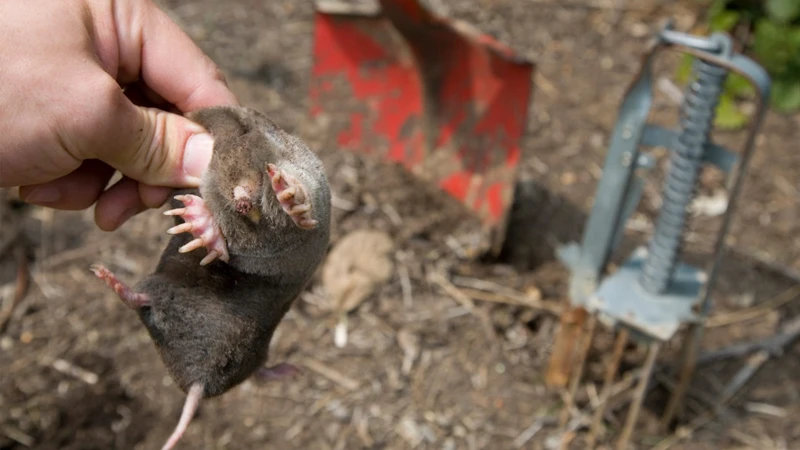
Ensuring the safety of both humans and animals is crucial when using mole poison. While it can be an effective solution to a mole infestation problem, it can also be dangerous if not handled with care. It is essential to follow strict safety measures while using mole poison. In this section, we will discuss some of the safety measures that need to be taken. These measures include the use of protective clothing, keeping the poison out of reach of children and pets, and proper disposal of the poison. Let’s delve into these measures in detail.
Protective Clothing
It is important to wear protective clothing while handling and applying mole poison as it can be a hazardous substance if not handled properly. Here are some items of clothing you should consider wearing:
| Protective Clothing | Purpose |
|---|---|
| Long-sleeved shirt and pants | Protect your skin from coming into direct contact with the poison |
| Safety gloves | Protect your hands from any accidental contact with the poison |
| Safety goggles | Prevent the poison from splashing into your eyes |
| Dust mask or respirator | Prevent inhalation of any dust that may be produced when applying the poison |
It is important to note that the type of protective clothing you wear may differ depending on the type of mole poison and the application method. Always read and follow the instructions on the label before using any mole poison, and use appropriate protective clothing to minimize the risk of harm to yourself. Additionally, make sure to wash your clothes and other protective gear thoroughly after use to avoid cross-contamination.
Keeping it out of Reach of Children and Pets
Keeping it out of Reach of Children and Pets: Mole poison should always be handled with utmost care as it can be extremely hazardous to humans and animals alike. It is crucial to keep it away from children and pets to avoid any accidental ingestion or poisoning. Here are some safety measures to keep in mind while using mole poison:
| Measure | Description |
| Store it in a Safe Place | The mole poison should always be kept in a secure and safe place, away from the reach of children and pets. Store it in a locked cabinet or shelf that is inaccessible to pets or children. Place a warning sign on the cabinet or shelf to alert others about the presence of poison and to prevent accidental exposure. |
| Supervise Children and Pets | While using mole poison, ensure that children and pets are kept away from the area. Supervise them at all times and do not allow them to play or eat near the active tunnels where the poison has been placed. Keep an eye on them when they are outside in the garden or yard to prevent any accidental ingestion or contact with the poison. |
| Dispose of Unused Poison Properly | Dispose of any unused or expired mole poison immediately, following the manufacturer’s instructions. Do not keep leftover poison lying around as it can pose a serious risk to children and pets. Seal it in a plastic bag and discard it in a trash can or dumpster that is inaccessible to pets or children. Do not dump it in a storm drain, toilet or sink as it can contaminate the environment. |
It is important to remember that mole poison can cause serious harm if ingested or absorbed by the skin. Take ample precautions to ensure that it is stored in a safe place, out of reach of children and pets. Always supervise children and pets when they are outside and keep them away from the active tunnels where the poison has been placed. Following these safety measures can help prevent any accidents and keep your loved ones safe.
Disposing of the Mole Poison
Disposing of the Mole Poison
Proper disposal of the mole poison is crucial for environmental safety. Here are some steps to follow for disposing of the mole poison safely:
| Step | Action |
|---|---|
| Step 1 | Collect all remnants of the mole poison, including empty packaging and unused portions of the product, in a sealable plastic bag or container. |
| Step 2 | Clearly label the container with the contents and date. |
| Step 3 | Contact your local waste management facility or hazardous waste disposal facility to inquire about their disposal policies and regulations regarding mole poison. |
| Step 4 | Follow the instructions provided by your local waste management facility or hazardous waste disposal facility for safe disposal of the mole poison. |
| Step 5 | Store the container in a safe and secure location, out of reach of children and pets, until it can be properly disposed of. |
By following these steps, you can ensure that the mole poison is disposed of safely and properly and does not pose a threat to the environment or the safety of individuals. Remember to always check with your local waste management facility or hazardous waste disposal facility for specific guidelines and regulations in your area.
How Long Does it Take for Mole Poison to Work?
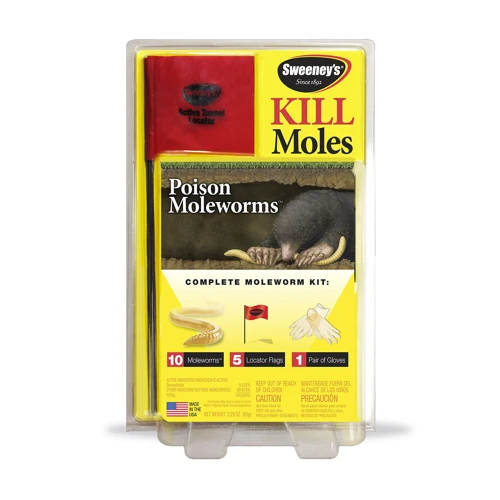
The duration of time it takes for mole poison to work can vary depending on the type of poison used, the size of the mole population, and the effectiveness of the application. It is important to note that mole poison does not work instantly after application.
Zinc phosphide is a common type of mole poison and usually takes around 24-48 hours to start showing its effect. Once ingested by the mole, zinc phosphide produces phosphine gas in the stomach, which is toxic to the mole. The mole may experience a slow, painful death from internal hemorrhaging and organ damage.
Bromethalin, another type of mole poison, can take up to three days to start showing its effect. This poison disrupts the nervous system of the mole leading to paralysis and seizure-like symptoms. Death may occur due to respiratory failure or cardiac arrest.
Talpirid is a mole bait that contains bromethalin and other ingredients. The time it takes for Talpirid to start showing its effect is similar to that of bromethalin alone, usually around two to three days. Talpirid is known for its high potency and effectiveness in controlling mole populations.
It is important to keep in mind that the effectiveness of mole poison can be affected by various factors such as weather, soil conditions, and the size of the mole population. In some cases, it may take longer for the poison to work if the moles are not actively feeding on the bait or if they are only consuming small amounts at a time.
As with any type of pesticide or poison, it is essential to follow the instructions carefully and take all necessary safety precautions. It is recommended to monitor the mole activity after applying the poison to determine if additional applications are necessary. Always dispose of any unused poison properly and keep it out of reach of children and pets.
What are the Side Effects of Using Mole Poison?
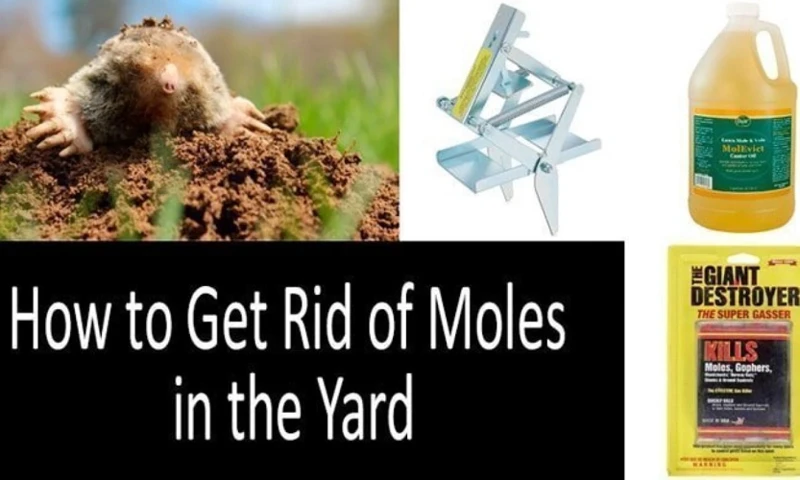
The use of mole poison can have several harmful side effects, both for the environment and for humans and pets. It is important to be aware of these potential side effects before using any type of mole poison.
Poisoning of Non-Target Animals: One of the biggest risks associated with using mole poison is that it can harm non-target animals such as birds, squirrels, and even domestic pets. This is because mole poison can be accidentally consumed by these animals if they come into contact with it. It is important to keep mole poison out of reach of other animals and to dispose of it properly.
Environmental Pollution: Mole poison can also have harmful impacts on the environment by contaminating soil and water sources. This can happen if the poison is not disposed of properly or if it leaches into the soil. The poisoning of the environment not only affects wildlife but can also have harmful impacts on human health.
Secondary Poisoning: Another potential side effect associated with mole poison is secondary poisoning. If an animal consumes a poisoned mole, it can also become poisoned, leading to a cycle of harm that can be difficult to control. This can also lead to unintended consequences, such as the death of beneficial predators like owls and hawks.
Health Risks for Humans: Using mole poison also carries risks for humans, who may come into contact with the poison while applying it. Some of the risks associated with the use of mole poison may include skin irritation, respiratory problems, and even neurological issues.
Health Risks for Pets: Pets are particularly vulnerable to the harmful effects of mole poison. If your pet accidentally ingests some of the poison, they can experience a range of symptoms, including vomiting, diarrhea, and seizures. In some cases, their symptoms may even be fatal.
It is important to be aware of the potential side effects associated with the use of mole poison and to take steps to minimize the risks. Before using any mole poison, it is recommended that you assess the risks carefully and consider alternative options such as trapping.
Alternatives to Mole Poison
There are some effective alternatives to using mole poison that are worth considering if you are hesitant about using chemical products in your yard. One of the most popular options is to use traps to catch moles. There are several types of traps available, including scissor traps and harpoon traps. These traps are designed to capture the moles alive, allowing you to release them elsewhere without harming them.
Another alternative to using mole poison is to use natural repellents that will make the moles seek out other areas to inhabit. One such option is to plant certain types of plants that are known to repel moles, such as daffodils and alliums. Planting garlic can also help deter moles, as can using castor oil as a repellent.
There are some DIY methods that can be used to get rid of moles without using chemicals. One such method is to create a barrier around your yard using wire mesh or chicken wire. This will make it more difficult for moles to gain access to your yard and will force them to seek out other areas to inhabit.
Finally, if none of these methods work, you can always hire a professional pest control company to assist you in getting rid of moles. These companies have access to a variety of techniques and tools that can be used to get rid of moles safely and effectively.
While mole poison can be an effective option for getting rid of moles, there are a variety of alternatives available that are worth considering. Whether you choose to use traps, natural repellents, or hire a professional pest control company, it is important to find a solution that works best for your particular situation and takes into account any safety concerns you may have.
Conclusion
In conclusion, the use of mole poison can be an effective method to control mole infestations. However, it is important to consider the type of mole poison being used and follow proper application methods to ensure its effectiveness. It is also crucial to take into account the potential safety concerns, both for the environment and for humans and pets.
Before proceeding with the use of mole poison, it is recommended to try alternative methods, such as trapping or natural repellents. In some cases, these methods may be more successful and safer for the surrounding ecosystem.
If using mole poison, it is crucial to properly identify the active tunnels and take all necessary precautions, such as wearing protective clothing and keeping it out of reach of children and pets. It is also essential to properly dispose of any unused poison and follow all legal regulations regarding its use.
Overall, the use of mole poison should be approached with careful consideration and a thorough understanding of its potential consequences. By following proper procedures and taking all necessary safety measures, mole poison can be an effective tool in controlling mole infestations.
Frequently Asked Questions
Is mole poison safe to use around humans and pets?
When used according to manufacturer instructions, mole poison is relatively safe. However, it is important to take precautions to prevent accidental ingestion by children and pets.
How does mole poison work?
Mole poison works by disrupting the mole’s metabolism, leading to death. The active ingredients in mole poison vary depending on the type of product, but common ingredients include zinc phosphide and bromethalin.
What are the alternatives to mole poison?
Alternatives to mole poison include using traps, flooding mole tunnels, and making the soil less attractive to moles by reducing watering and fertilizer applications.
How do I identify a mole infestation?
Common signs of a mole infestation include the presence of mole tunnels or mounds in your lawn or garden. You may also notice raised ridges in your lawn or brown patches of grass where the moles have chewed on the roots.
How long does it take for mole poison to work?
The length of time it takes for mole poison to work varies depending on the type of product and the size of the mole infestation. Most products take several days to several weeks to be effective.
What are the safety measures to follow when using mole poison?
When using mole poison, it is important to wear protective clothing, keep the product out of reach of children and pets, and dispose of it properly. See the manufacturer’s label for specific safety instructions.
Can I use mole poison in any type of soil?
Mole poison should not be used in areas with sandy or loose soil that could allow the poison to leach into groundwater. It is important to follow specific product instructions and precautions for your specific soil type.
What are the side effects of using mole poison?
Mole poison can cause illness or death if ingested by pets or wildlife. Additionally, it may harm beneficial insects and pollinators if not used carefully. Use mole poison with caution and follow the manufacturer’s instructions.
Is it legal to use mole poison?
Regulations regarding the use of mole poison vary by state and country. Before using mole poison, it is important to research and follow local laws and regulations related to pesticide use.
Can mole poison harm the environment?
Mole poison can potentially harm the environment if used improperly or allowed to leach into groundwater. It is important to follow the manufacturer’s instructions for use and disposal, and to dispose of any unused product safely.
